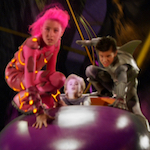
June 10, 2005
Right before this series we looked at the Spring 2005 release of Robert Rodriguez and Frank Miller’s experiment in comic book literalism SIN CITY. Just over two months later Rodriguez was back with another movie, this time for the kiddies.
 In a way THE ADVENTURES OF SHARKBOY AND LAVAGIRL IN 3-D continues the SIN CITY mission by using the at-the-time pretty new approach of heavy green screen to adapt a story on a lower budget than if he had to build full sets and things. But while the other one directly translates the exact words and pictures of a popular comic book series, this one is based on, according to the credits, “the stories and dreams of” his eight-year-old son Racer Max. It’s credited as “A RODRIGUEZ FAMILY MOVIE.”
In a way THE ADVENTURES OF SHARKBOY AND LAVAGIRL IN 3-D continues the SIN CITY mission by using the at-the-time pretty new approach of heavy green screen to adapt a story on a lower budget than if he had to build full sets and things. But while the other one directly translates the exact words and pictures of a popular comic book series, this one is based on, according to the credits, “the stories and dreams of” his eight-year-old son Racer Max. It’s credited as “A RODRIGUEZ FAMILY MOVIE.”
 I had never seen this before, correctly assuming it was not for me despite my fandom for Rodriguez (senior)’s previous films. But in the opening scene, I gotta tell you, I felt there was a chance I would enjoy it. The idea of it made me chuckle a little, despite some computer animation most productions would’ve considered unpassable. Our main character Max (Cayden Boyd, MYSTIC RIVER) is narrating the story of how he met Sharkboy (Taylor Lautner, SHADOW FURY) and Lavagirl (Taylor Dooley). He says Sharkboy was a normal kid whose dad was a marine biologist, and he liked to feed sushi to the sharks from the dock on their laboratory. “But one day, an incredible, mysterious storm appeared,” destroyed the lab and separated Sharkboy from his father. “But one of the sharks recognized him” and took him to “their cave home” where hundreds of sharks “raised him as one of their own, training him in the ways of the shark.”
I had never seen this before, correctly assuming it was not for me despite my fandom for Rodriguez (senior)’s previous films. But in the opening scene, I gotta tell you, I felt there was a chance I would enjoy it. The idea of it made me chuckle a little, despite some computer animation most productions would’ve considered unpassable. Our main character Max (Cayden Boyd, MYSTIC RIVER) is narrating the story of how he met Sharkboy (Taylor Lautner, SHADOW FURY) and Lavagirl (Taylor Dooley). He says Sharkboy was a normal kid whose dad was a marine biologist, and he liked to feed sushi to the sharks from the dock on their laboratory. “But one day, an incredible, mysterious storm appeared,” destroyed the lab and separated Sharkboy from his father. “But one of the sharks recognized him” and took him to “their cave home” where hundreds of sharks “raised him as one of their own, training him in the ways of the shark.”

When Max met Sharkboy he took him home and kept him in his shower for a while, I thought that was funny. I wonder if Guillermo del Toro has seen this.

Then they met Lavagirl (Taylor Dooley), a girl with purple hair and heat powers, who tried to get Max to come to “a planet so cool it makes you drool” called Planet Drool, but he said he couldn’t because he had school.
It really does kinda sound like a kid telling a rambling, nonsensical story, plus a few likely dad additions like the sharks teaching him “Always go forward, never back” and “to live on instinct and instinct alone.” But then we find that Max is reading this story to his class as his “What I did on my summer vacation” story. A total fucking dickface bully named Linus (Jacob Davich) then uses his own assignment just to make fun of Max and say that he smells bad.
The class laughs at Max for claiming that his Sharkboy story really happened, but he admits to the teacher, Mr. Electricidad (George Lopez, SKI PATROL), that it comes from the thick, heavily illustrated dream journal he carries with him at all times, like a normal human child from ordinary life.
Max’s parents are played by David Arquette (ROADRACERS) and Kristin Davis (ATOMIC TRAIN), who seem to be about to get a divorce and are weirdly open to talking Max about it like he’s a peer. Dad is an unemployed writer who encourages Max and says “Kids need their dreams,” while Mom says “Kids need to grow up.” Troubling.
Linus is the type of bully who has minions he directs with hand signals, and who says things like, “I’m gonna burst your bubble, Dream Boy.” He steals the dream journal and defaces it, but Max is redeemed when Sharkboy and Lavagirl burst into the classroom right in front of everybody and take him to their shark-shaped rocket ship to go to Planet Drool, “a place for kids to dream and have endless fun.” They explain that yes they are imaginary and they need his help because he made them up. (He’s their God?)

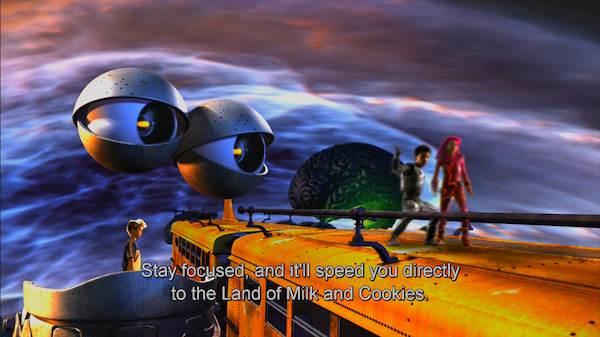
For a movie all about imagination this is extremely literal-minded. In order to stop “the darkness” from destroying Planet Drool they must travel through The Passage of Time (a bunch of clocks), catching the Train of Thought (a train with brains around it), swimming down the Stream of Consciousness and skating across the frozen Sea of Confusion to the Dream Lair (a bed). Everything is the most obvious, generic version of a thing kids like (cookies, toys, rollercoasters) – a Dollar Store clearance bin fantasy world if I’ve ever seen one. Max has to dream within the dream to find out more information like there’s a crystal heart and an ice princess in an ice palace. And Linus shows up as a villain in a Dracula cape named Minus and puts them in a bird cage.
The teacher, who seemed a little insensitive in the waking world now becomes an evil super villain called Mr. Electricity, a giant floating head similar to that much-mocked MODOK character in ANT-MAN 3. Or I guess he also kind of looks like Zordon from Mighty Morphin Power Rangers.
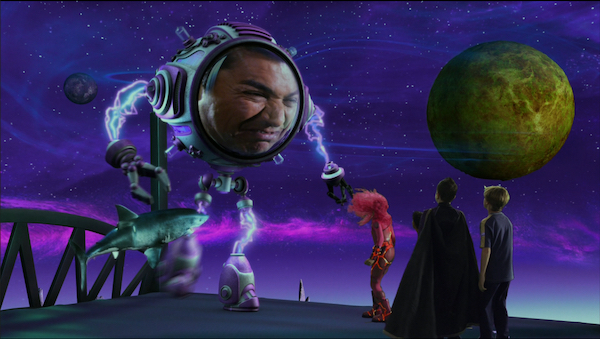
A thought I had while watching was that if this exact movie had been made in the ‘80s, on film, with matte paintings, puppets, etc., it would at least be tolerable for longer, if not good. And even made with this low budget 2005 technology if it had been done more artfully, if it was beautiful to look at, there might be something there. But at this level of quality, from my perspective of not-the-intended-audience, it very quickly shows why a movie “based on the stories and dreams of Racer Max” was not gonna work. Yes, it can be funny and cute to hear a kid make up a silly, meandering story. But do you want to listen to it for 93 minutes? And it’s not your kid, but an actor playing Robert Rodriguez’s kid? Not as appealing.
If I had known there would be exactly one good thing in this movie I wouldn’t have guessed what it would be. It’s actually Lautner! I have been unkind about some of his acting performances as a grown person, but as a little kid he was actually pretty spectacular in this role. More than the others he gets that vibe of Rodriguez’s FOUR ROOMS segment The Misbehavers: an intense little rascal being a goof. Actually, you know what, he really reminds me of the Feral Kid in ROAD WARRIOR, but with this foam sculpted shark-themed armor. He takes the super hero poses and the monstrousness seriously, and also he had trained in martial arts since he was six so he does gratuitous flips and fights some animated electrical cords and cuckoo clocks and stuff (providing his own choreography, they say).

There’s also a part where he goes into a musical number, and as worn out as the “gratuitous musical number” joke is his full commitment even made me laugh there. I support the character of Sharkboy, just not the movie he’s in.
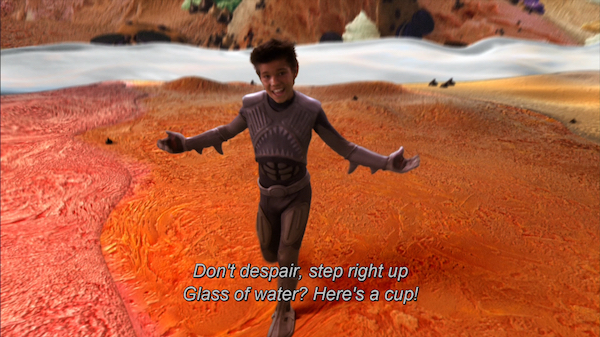
I guess another good part was at the beginning when Max doesn’t yet know Sharkboy and Lavagirl are real but he goes to investigate a noise in the kitchen and in the lightning flashes we see them creepily hanging from the ceiling like it’s a horror movie.
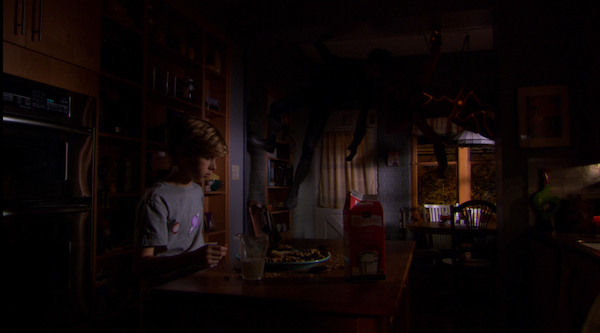

And there’s one weird joke about the location of the school that made me laugh – I won’t give it away in case you too decide you have to watch this for some reason. You need something to look forward to.
As the title implies it was released in 3-D, but this was four years before AVATAR and/or MY BLOODY VALENTINE 3D spurred the digital 3-D revolution, so it was just the terrible red and green paper glasses type. I have not seen it that way but unsurprisingly everyone thought it looked like absolute garbage, and that may have made the reviews even worse than they might’ve been if critics could’ve seen what they were looking at. (It is kind of funny though that there is a “GLASSES ON” sign that lights up in the rocket ship and then they put 3D glasses on for the launch.)
According to Wikipedia it’s unknown whether THE ADVENTURES OF SHARKBOY AND LAVAGIRL IN 3-D was a flop or not without knowing the marketing budget. It reportedly cost $50 million and made $72 million. If it really cost that much that’s shocking to me because Rodriguez made his name as a guy who could stretch a budget. Obviously the volume of visual FX is very high but also the quality is not up to the standard of what had previously been considered suitable for theatrical release. Maybe a fruit roll-up commercial or something. Maybe.

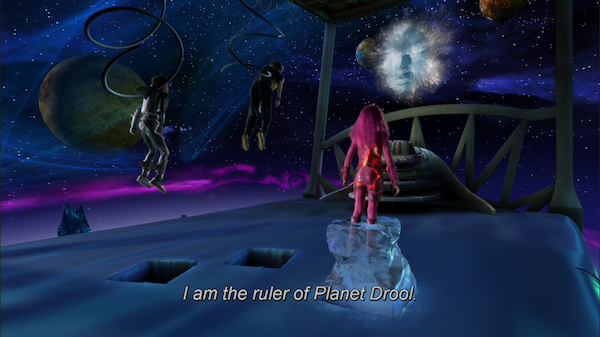
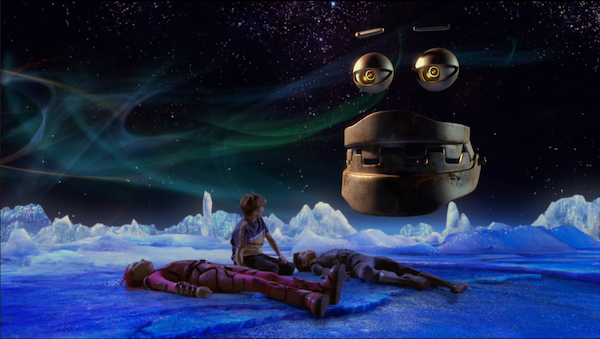
I don’t know, I suppose it’s possible it didn’t look as shitty before the high definition transfer, but some of these shots would’ve been rejected from the 1995 MORTAL KOMBAT movie. I know you can’t really be sure about reported budgets or compare movies produced in different countries, but just for the record, GODZILLA MINUS ONE and EX_MACHINA won visual FX Oscars on, allegedly, $15 million budgets. DISTRICT 9 supposedly cost $30 million. Shit, set the FX aside, those are movies with many locations and sets and actors and things. You’re really telling me a movie that’s 75% unknown kid actors greenscreened onto rollercoaster screensavers cost $20 million more? Even though it was filmed at his own studio with his own company doing some of the animation? The Jimmy-Neutron-ass company that thought this looked good enough for their logo?
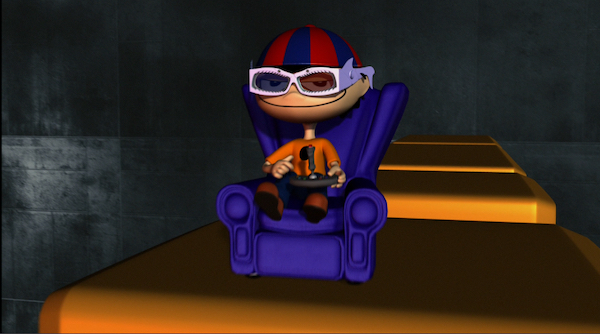
I actually think there’s a logical explanation for this that would speak highly of Rodriguez, and that’s that he fleeced those motherfuckin Weinsteins for tens of millions of dollars. “You know what, I’ll give you a discount since you’re such a great guy.”
If that’s the case I gotta support it. And I can’t get too mad anyway because I don’t know, it’s probly weirder and more sincere than some of the more standard made-for-children garbage that I would find equally interminable. Even if kids didn’t love watching it I’m sure Rodriguez had fun with his kids making it. Maybe he should be doing that on his own time not ours, but I got no business telling people how to parent. If you’re like me though and your kids didn’t make this movie then I recommend continuing with your plan to not watch it.
 Tie-ins: Several related books were released: The Illustrated Screenplay, The Movie Storybook, Max’s Journal, and two Sharkboy and Lavagirl Adventures children’s novels by Rodriguez and Chris Roberson (The Day Dreamer and Return to Planet Drool).
Tie-ins: Several related books were released: The Illustrated Screenplay, The Movie Storybook, Max’s Journal, and two Sharkboy and Lavagirl Adventures children’s novels by Rodriguez and Chris Roberson (The Day Dreamer and Return to Planet Drool).
Legacy: Reportedly Miley Cyrus was in consideration for Lavagirl, but then she got Hannah Montana. So maybe we can thank this movie not casting her for her later pop career? I don’t know. Lautner obviously went on to larger stardom three years later when he joined up with LORDS OF DOGTOWN director Catherine Hardwicke for TWILIGHT.
Sequel: I guess Rodriguez’s 2020 Netflix film WE CAN BE HEROES takes place in the same universe – it’s about children of super heroes, including Guppy (Vivien Lyra Blair, Princess Leia from the Obi-Wan Kenobi show), the daughter of Sharkboy and Lavagirl. Dooley returns as Lavagirl but Sharkboy is played by stuntman J.J. Dashnaw. Also in the trailer we see the same Great White Bites cereal. No word on the budget but it looks twenty times more expensive than SHARKBOY AND LAVAGIRL, with FX by ILM and Weta. Racer is credited as a producer and his brother Rebel did the music.
* * *
P.S. Here’s a real problem with doing this as long as I have and/or having an aging brain. I went and watched MR. & MRS. SMITH (released on the same day as SHARKBOY), didn’t enjoy it much, sat down to write about it, went to look up whether or not I reviewed it when it came out, discovered I actually reviewed it in a previous summer retrospective back in 2013 (the “Summer Movie Flashback” series). So I guess writing another one would be useless. The action is still pretty good, the two stars are still super hot, the joke is still not that funny, the score by John Powell still sucks. But I have some updates for the legacy section.
One of Brad Pitt’s stunt doubles, David Leitch, went on to co-direct JOHN WICK and then direct ATOMIC BLONDE, DEADPOOL 2, HOBBS & SHAW, BULLET TRAIN and THE FALL GUY.
Fight choreographer Damon Caro became Zack Snyder’s go-to stunt coordinator/second unit director, including on his produced-not-directed movies like 300: RISE OF AN EMPIRE and WONDER WOMAN, so he’s a big part of what we think of as the Zack Snyder style.
In the old review I mentioned the unaired TV pilot Doug Liman and Simon Kinberg did in 2007. Well, in 2024 there was a new Mr. & Mrs. Smith made by other people – an Amazon Prime version created by Donald Glover and Francesca Sloane. It’s a different premise than the movie, with Glover and Maya Erskine playing highly competent failures who accept mysterious jobs living together as fake husband and wife and being sent on assassination missions. It’s sort of reverse of the movie, actually, because the arc is that they are just people who work together at first, but playing husband and wife makes them start to fall for each other, then the organization tries to turn them against each other.
Honestly the reason I watched it is that Glover also created Atlanta, one of my favorite shows ever. This has some overlap with some of the same directors and cinematographers, similarly cinematic look and a preference for skipping time between episodes and throwing you into a situation without context, trusting you to catch on. This too is an excellent TV show, way funnier than the movie but also very dark and uncomfortable because it lets you take the deaths seriously even when the characters aren’t. Though it stars regular hot people instead of fucking Brad Pitt and Angelina Jolie I would even argue that the show is hotter than the movie because of the way it builds and releases the sexual tension. It’s a perfect season of television with an ending that makes it complete, although they are mysteriously doing a second season now. Anyway, forget the movie but definitely watch the show if you have access to it.


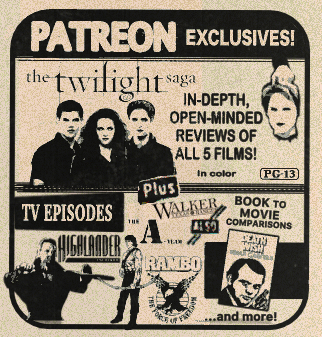

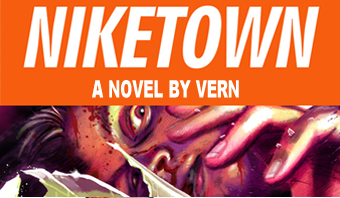
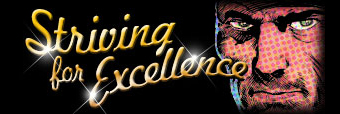
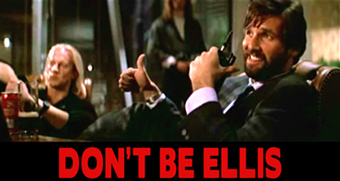










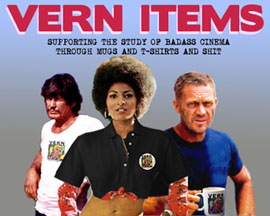
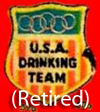








June 9th, 2025 at 8:15 am
In general I love Rodriguez’ kids movies because of their wild early Nickelodeon energy. But this one really tested my patience. Even though it was still full of the weird shit that nobody else seem to do (I feel like in another timeline, his first movie wouldn’t be EL MARIACHI, but something closer to the works of Jeunet, Gondry or Tim Burton), it was just so slow and boring, that it failed to hold my interest. It’s not even in the “I might give it another shot one day” category. In the end, I did appreciate the strangeness of it all, but as a whole it just didn’t work. However, apparently it went over really well with a bunch of kids at that time, as I learned when WE CAN BE HEROES came out and a huge chunk of social media was really mad at its treatment of Sharkboy, who, as mentioned, was not just recast, but also only communicated through growls in the movie.
Thankfully the other superhero kids movie of 2005 (Which I really hope you won’t skip, although I don’t know if it was a summer release) was much better. (Don’t worry about hurting my feelings, in case you review, but don’t like it.)